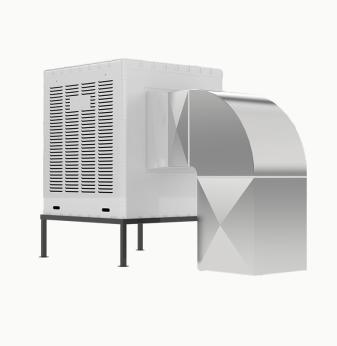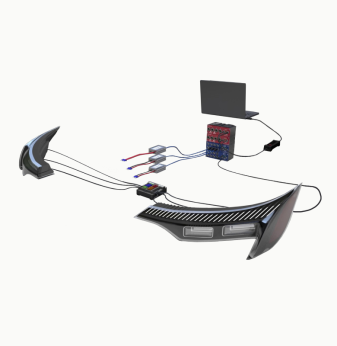Why Zero Trust Matters in Embedded Systems

As the attack surface of connected devices expands, traditional perimeter-based security models are no longer sufficient. Embedded systems, found in everything from industrial controllers to smart medical devices and automotive ECUs, are increasingly targeted by attackers exploiting hardware interfaces, firmware vulnerabilities, and insecure communication channels. The Zero Trust Architecture (ZTA) offers a new model built on the principle of "never trust, always verify," which is especially critical for embedded systems operating in critical environments.
A recent survey on LinkedIn by Embedded Computing Design showed that nearly 68% of embedded engineers consider security the top priority for new IoT devices, and 42% of them have already started exploring Zero Trust implementation.
Core Principles of Zero Trust in Embedded Environments
Zero Trust is not a product but a security philosophy. Its implementation in embedded systems revolves around several key principles:
- Strong Identity Verification: Every device, component, and user must prove its identity continuously.
- Least Privilege Access: Devices and processes only receive the permissions strictly necessary for operation.
- Micro-Segmentation: Systems are divided into smaller zones to limit the lateral movement of threats.
- Continuous Monitoring: Embedded systems should report activity to central or edge monitoring systems.
- Assume Breach Mentality: The system should be designed assuming parts of it may already be compromised.
Implementing Zero Trust at the Firmware Level
| Component | Zero Trust Technique |
| Bootloader | Secure boot validation and signature enforcement |
| RTOS/Firmware | Enforced memory isolation, privilege separation |
| Communication Stack | Mutual TLS authentication, endpoint validation |
| Updates | Secure OTA with signed firmware validation |
Additional strategies:
- Use of TPMs or HSMs for key storage
- Runtime attestation for integrity verification
- Watchdogs and anomaly detection engines
Implementing Zero Trust at the Hardware Level
- Root of Trust (RoT): Hardware modules that perform secure measurements and cryptographic operations.
- Secure Enclaves: Trusted execution environments (TEEs) that isolate sensitive code and data.
- Tamper Detection: Physical intrusion detection and response mechanisms.
- Hardware firewalls: To isolate peripherals and prevent unauthorized access.
Common Use Cases Across Industries
| Industry | Application | Why Zero Trust? |
| Automotive | ECU security and OTA updates | Prevent firmware tampering, control data access |
| Industrial IoT | PLCs and gateways | Segment systems, limit spread of compromise |
| Medical Devices | Wearables, monitors | Protect patient data, ensure system integrity |
| Smart Home | Gateways, cameras | Prevent lateral movement, enforce secure onboarding |
Challenges in Adopting Zero Trust in Embedded Systems
- Resource Constraints: Memory and processing limitations restrict complex encryption or monitoring.
- Legacy Systems: Older devices lack modern security primitives.
- Interoperability: Zero Trust needs to be layered on top of existing protocols and stacks.
- Cost vs. Security Trade-offs: Security features may increase BOM or time-to-market.
According to a discussion thread on Reddit's r/IOT, engineers working in smart grid deployments noted that implementing Zero Trust on legacy substations required custom firmware redesigns and hardware upgrades—highlighting how complex the transition can be for brownfield projects.
Best Practices for Adopting Zero Trust in Embedded Projects
- Start with threat modeling and asset identification.
- Define trust boundaries and enforce hardware-based isolation.
- Use secure provisioning and device onboarding processes.
- Regularly update firmware and validate via signed binaries.
- Integrate lightweight monitoring and anomaly detection where possible.
- Educate engineering teams on ZTA principles.

Expert Insights and Industry Data
According to a 2024 report by MarketsandMarkets, the global embedded security market is projected to grow from $7.5 billion in 2023 to over $13.1 billion by 2028, driven in large part by the need for Zero Trust frameworks in industrial and automotive IoT.
In a statement to TechRepublic, Forrester analyst Chase Cunningham noted: "Zero Trust is no longer optional. As embedded systems connect to the cloud and open themselves to remote management, the risk multiplies. Zero Trust is the only scalable way forward."
A 2023 discussion among firmware developers on Hacker News emphasized the growing use of secure enclaves in microcontrollers like ARM TrustZone and RISC-V PMP for enforcing Zero Trust at the hardware level.
Conclusion
Zero Trust is becoming a strategic necessity in embedded systems development. From secure boot and mutual authentication to real-time monitoring and privilege isolation, ZTA provides a framework to secure devices in hostile or exposed environments. At Promwad, we help clients integrate Zero Trust principles into hardware and firmware design, making their embedded products more resilient, secure, and future-proof.












